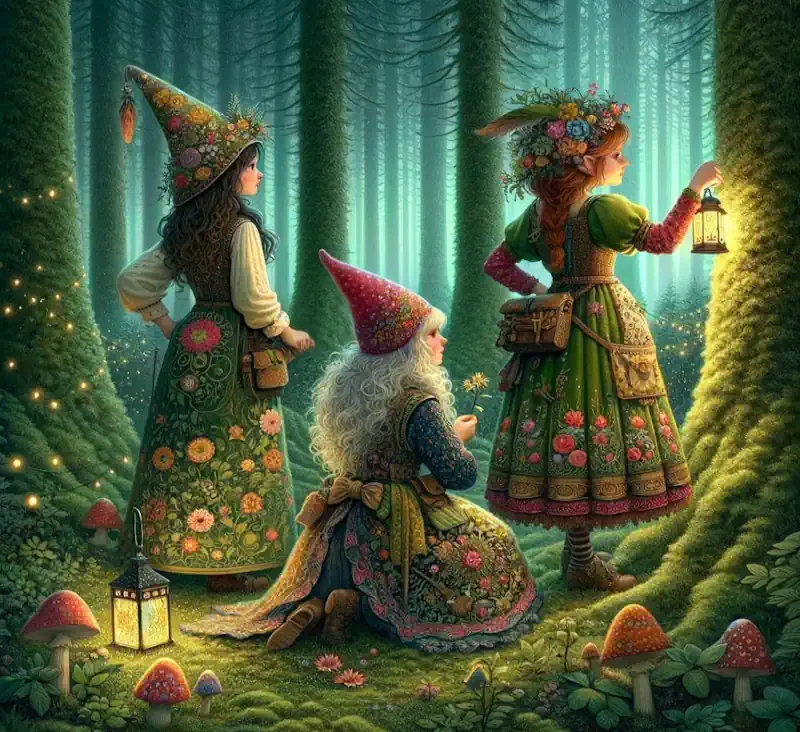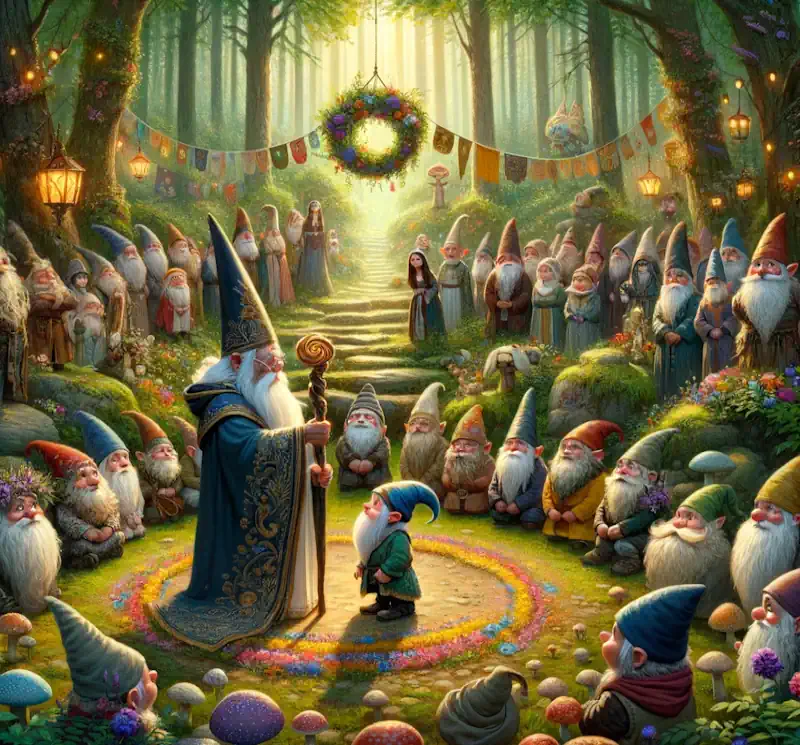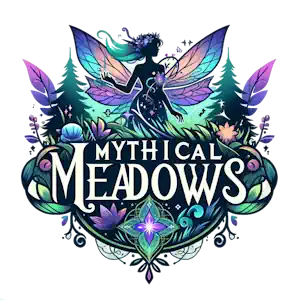In the fascinating world of mythical creatures, gnomes have long captured the imagination of both young and old alike. These diminutive beings, known for their mischievous nature and love for all things nature, have been the subject of countless stories and legends throughout history.
One aspect that adds to their allure is the enchanting names bestowed upon them, each holding a unique charm and character. From whimsical monikers like Twinkleberry and Bramblewink to more grounded names like Oakfoot and Willowglimmer, the names of gnomes evoke a sense of magic and wonder that transports the reader into a world of fantasy.
The Origin of Gnome Names
Gnomes, the enchanting creatures often associated with gardens and folklore, have names that are rich in history and meaning. The origin of gnome names can be traced back to ancient mythology, literature, and pop culture. These names reflect various aspects of gnome culture, personality traits, and the whimsical worlds they inhabit.
Ancient Mythology and Folklore
In ancient mythology and folklore, gnomes were considered to be earth elementals or nature spirits. These mystical beings were believed to dwell underground and were associated with the protection of natural treasures, such as precious gems and minerals.
The names given to gnomes in ancient mythology often reflected their connection to nature and the earth. Names like Terra, Gaia, and Sylvanus were commonly used to honor the gnomes’ affinity for the natural world. These names evoke a sense of harmony with the earth and emphasize the gnomes’ role as guardians of nature.
Literature and Pop Culture
Gnomes have also played prominent roles in literature and pop culture, further influencing the names ascribed to them. The works of authors such as J.R.R. Tolkien and Terry Pratchett have popularized gnome characters with distinct names that capture their unique personalities.
Literary gnome names often incorporate elements of adventure, wisdom, and mischief. Characters like Bilbo Baggins, known for his courage in Tolkien’s “The Hobbit,” and Tiffany Aching, the young witch-in-training in Pratchett’s “Discworld” series, showcase the diverse range of names that have become associated with gnomes through literature.
Pop culture has also contributed to the imagination of gnome names. From the beloved Travelocity gnome named Roaming Knome to the mischievous garden gnomes featured in animated films like “Gnomeo & Juliet,” these modern interpretations have added a playful and contemporary twist to gnome names.
Traditional Gnome Names
Traditional gnome names often draw inspiration from the natural world and the occupations and crafts practiced by gnomes. These names reflect the timeless connection between gnomes and their environment, as well as their industrious nature.
Nature-Inspired Names
Nature has always been a significant source of inspiration for gnome names. Delving into the beauty and diversity of the natural world, these names emphasize the gnomes’ kinship with plants, animals, and natural landscapes.
From names like Willow, Moss, and Fern, which evoke images of lush forests, to names like Pebble, Sandstone, and Flint, which reflect the affinity for stones and minerals forged within the earth, nature-inspired names capture the essence of a gnome’s connection to their surroundings.
Occupation and Craft-Based Names
Gnomes are known for their craftsmanship and dedication to their chosen professions. Gnome names often reflect the trades and occupations they excel at, showcasing their skills and expertise.

Names like Tinker, Smith, and Weaver highlight the traditional crafts practiced by gnomes. These names not only reflect their vocational aptitude but also emphasize their industrious nature and the importance they place on their work.
Fantasy Gnome Names
In the realm of fantasy, where imagination knows no bounds, gnome names take on a more otherworldly, fantastical quality. These names are often imbued with magic, mystery, and a sense of wonder.
Fantastical and Magical Names
Fantasy gnome names often incorporate elements of magic, enchantment, and ancient lore. Drawing inspiration from mythical creatures and fantastic realms, these names transport us to a world where anything is possible.
Names like Stardust, Moonshadow, and Spellbinder evoke a sense of mystery and wonder. These names reflect the magic that is inherent to gnome culture and highlight their connection to mystical forces.
Whimsical and Playful Names
Gnomes are known for their playful nature and mischievous demeanor. Whimsical gnome names capture their lighthearted spirit and bring a touch of joy and laughter to their identity.
Names like Giggles, Chimes, and Puddledrop reflect the whimsy and merriment associated with gnomes. These names not only showcase their love for entertainment but also emphasize their ability to bring happiness and laughter to those around them.
Gendered Gnome Names
Gnome names, like in many other cultures, can be gendered, providing distinctions between male and female gnomes. These gendered names highlight the diversity and individuality of gnome characters.
Masculine Gnome Names
Masculine gnome names often embody strength, wisdom, and leadership qualities. These names reflect traditional gender roles while also showcasing the unique personalities of male gnomes.
Names like Oakheart, Bramblebeard, and Stonehammer evoke images of resilience and steadfastness. These names emphasize the masculine attributes typically associated with gnome characters and celebrate their inherent qualities.
Feminine Gnome Names
Feminine gnome names, on the other hand, reflect grace, beauty, and nurturing qualities. These names highlight the diverse range of traits associated with female gnomes and celebrate their unique contributions to gnome society.
Names like Blossom, Aurora, and Seraphina evoke images of warmth and compassion. These names epitomize the feminine grace and strength of character that female gnomes possess.

Unique Gnome Names
Just as every gnome is unique, some gnome names stand out as particularly individual and extraordinary. These one-of-a-kind and uncommon names reflect the distinct personalities and stories of the gnomes who bear them.
One-of-a-Kind Gnome Names
Some gnome names are truly one-of-a-kind, crafted to capture the essence of a specific gnome’s personality and experiences. These names often combine elements from various sources, including nature, myths, and personal stories.
Names like Solstice, Thunderwhisper, and Moonstone are examples of these unique gnome names. These names not only reflect an individual gnome’s journey but also evoke a sense of awe and intrigue.
Uncommon and Unusual Gnome Names
Uncommon and unusual gnome names showcase the diversity and creativity that exists within gnome culture. These names challenge conventions and are often chosen to highlight a gnome’s individuality and distinct characteristics.
Names like Zephyr, Nimblefoot, and Whisperdust stand out from more common gnome names. These names capture the imagination and celebrate the uniqueness of each gnome’s story and identity.
Modern Gnome Names
As times change and cultures evolve, so do gnome names. Modern gnome names encompass contemporary trends and draw inspiration from popular culture, reflecting the ever-evolving nature of language and society.
Contemporary and Trendy Gnome Names
Contemporary gnome names often mirror naming trends among humans, adopting popular names of the time. These names reflect the influence of modern culture and society on gnome naming conventions.
Names like Harper, Finn, and Luna have gained popularity among modern gnome circles. These names not only bridge the gap between gnome and human cultures but also showcase the shared trends that shape naming choices.
Gnome Names Inspired by Popular Culture
Popular culture has a strong influence on gnome names, with some gnomes being named after beloved characters from books, movies, and television shows. These names pay homage to the impact that popular culture has on gnome communities.
From names like Gandalf and Hermione, inspired by iconic characters from fantasy literature, to names like Yoda and Frodo, drawn from the realms of science fiction and adventure, these names capture the imagination and create a connection between gnomes and their favorite stories.
Creating Your Own Gnome Name
For those seeking a unique gnome name, crafting one’s own name can be a creative and fulfilling process. The possibilities are endless when it comes to inventing a gnome name, allowing individuals to truly personalize their identity.
Drawing Inspiration from Nature and Hobbies
One way to create a gnome name is by drawing inspiration from the natural world and personal hobbies. By incorporating elements of nature, such as favorite plants or animals, and interests, such as a passion for music or art, individuals can develop a name that reflects their personality and passions.
For example, a gnome with a love for butterflies and a talent for painting may choose the name Flutterbrush, merging their affinity for nature and creativity into a unique and personal gnome identity.

Combining Words to Invent Names
Another method for creating a gnome name is by combining words or syllables to invent a new name. This approach allows for a more abstract and evocative name that can have different interpretations and meanings.
By blending words like Whisper and Hearth, one can create the name Whispertide, which conveys a sense of tranquility and comfort. These crafted names offer a sense of mystery and intrigue, allowing individuals to embody their unique gnome character.
Gnome Naming Traditions
Gnome naming traditions vary across communities and families, reflecting the diverse cultural practices within gnome society. These traditions play a significant role in shaping the names of gnomes, instilling a sense of heritage and community identity.
Community and Family Influence
In some gnome societies, the community plays a vital role in naming newborn gnomes. Elders and esteemed members of the community may come together to decide upon a suitable name based on a gnome’s familial background, personality traits, or notable achievements.
This community involvement in naming ensures that the names bestowed upon gnomes reflect their place within the larger gnome society and their connection to their community’s values and traditions.
Gnome Naming Ceremonies
Gnome naming ceremonies are also a cherished tradition in many gnome cultures. These ceremonies mark the official introduction of a gnome into the community, celebrating their identity and welcoming them into the gnome world.
During these ceremonies, family and friends gather to witness the naming of a gnome. The ceremony often involves rituals, blessings, and the sharing of stories that reflect the unique qualities and aspirations of the gnome being named.

Cultural Variations of Gnome Names
Gnomes are not confined to a single culture or country, and as a result, their names vary across different regions and languages. Each cultural variation of gnome names brings its own unique flavor and reflects the values and traditions of the respective gnome communities.
Gnome Names from Different Countries
Gnomes can be found in folklore and mythology across the globe, and their names reflect the diverse cultures they inhabit. From the Scandinavian “Tomte” to the German “Heinzelmännchen,” gnomes in different countries have distinct names that are deeply rooted in their respective cultural narratives.
These country-specific names add depth and richness to the gnome lore, showcasing the global fascination with these enchanting creatures.
Gnome Names in Different Languages
Gnome names, when translated into different languages, take on unique phonetic and linguistic qualities that further enrich their meanings. The sounds and cadences associated with each language can create a distinct atmosphere around gnome names.
For example, a name like “Viento,” which means “wind” in Spanish, evokes a sense of movement and airiness, adding an extra layer of meaning to a gnome’s identity.
The Significance of Gnome Names
Gnome names hold great significance within the gnome community, symbolizing aspects of their identity, culture, and personal connection to the world around them. These names shape the narratives and stories that define gnome characters, offering insights into their roles and relationships within gnome society.
Symbolism and Meaning
Gnome names often have symbolic meanings that reflect the traits and characteristics associated with individual gnomes. For example, a gnome named Ember might symbolize warmth and passion, while a gnome named Sage might represent wisdom and knowledge.
These symbolic meanings allow gnomes to represent specific qualities or embody aspects of the natural world, contributing to the enchanting nature of their stories.

Personal Connection and Identity
Gnome names are deeply personal, serving as a means for gnomes to connect with their own identities and histories. Each gnome name carries with it a sense of individuality and uniqueness, contributing to the vibrant tapestry of gnome culture.
A gnome’s name often shapes their perception of their role within their community and the larger world. It is through their names that gnomes forge their own narratives, leaving an indelible mark on the rich and whimsical world of gnomes.
Final Thoughts
Gnome names are as diverse and enchanting as the gnomes themselves. From ancient mythologies to contemporary trends, gnome names encompass a wide range of inspirations and cultural influences. Whether traditional or fantastical, gendered or unique, these names play a significant role in shaping the identities and narratives of gnomes. They reflect the rich history, personal connections, and magical qualities that make gnomes such beloved and fascinating creatures in folklore, literature, and popular culture.

